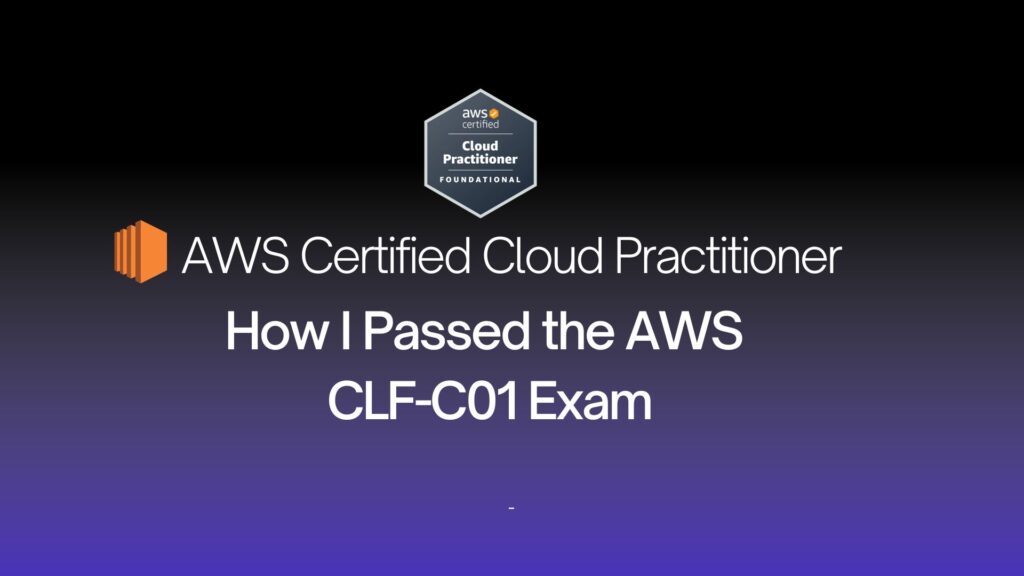Last week, on September 13th, 2023, I officially became an AWS Certified Cloud Practitioner! Having worked with AWS casually for some time, I decided to formalize my knowledge with this certification. Here’s my complete guide on how I tackled the CLF-C01 exam.
Why Start with Cloud Practitioner?
The AWS Certified Cloud Practitioner (CLF-C01) is the foundational certification that validates basic AWS and cloud knowledge. Since I already had practical experience with AWS services through work projects, this seemed like the logical first step to validate and structure my existing knowledge before pursuing the AWS Developer Associate certification.
Important timing note: I took the CLF-C01 exam on September 13th, 2023, just five days before it was retired on September 18th, 2023. The new CLF-C02 exam was introduced on September 19th, 2023, with registration having opened on August 22nd. If you’re reading this and planning to take the exam, you’ll now be taking the updated CLF-C02 version.
My Study Strategy (6 Weeks Total)
Having prior AWS experience definitely helped, but I still needed to fill knowledge gaps and understand the business/billing aspects I hadn’t encountered in my day-to-day work.
Phase 1: Foundation Review (2 weeks)
- Refreshed cloud computing fundamentals
- Studied AWS Well-Architected Framework principles
- Reviewed services I hadn’t used extensively
Phase 2: New Knowledge Areas (3 weeks)
- Pricing and Billing: This was completely new territory for me
- Security and Compliance: Deeper dive into IAM, compliance programs
- Business aspects: Cost optimization, support plans, TCO calculations
Phase 3: Practice and Weak Areas (1 week)
- Multiple practice exams to identify gaps
- Focused review on billing/pricing questions
Key Study Resources
Primary Materials
- AWS Cloud Practitioner Essentials (free official course)
- AWS official practice exam ($20 – worth every penny)
- AWS documentation for services I used but wanted to understand better
- AWS Training Games – AWS has gamified learning modules that made studying more engaging and fun
Practice Tests
- AWS official practice exam
- Additional practice tests from Tutorials Dojo
- ExamTopics question dumps:
Important note on ExamTopics: While these question dumps are helpful for practice, not all answers provided are 100% accurate. Use them to identify knowledge gaps and practice question formats, but always verify answers through official AWS documentation rather than following them blindly.
Exam Breakdown and My Focus Areas
Domain 1: Cloud Concepts (26%)
Since I had practical experience, this was mostly review. I focused on articulating the business benefits of cloud adoption.
Domain 2: Security and Compliance (25%)
Challenging area for me: While I used IAM, I needed to learn about compliance programs, shared responsibility model details, and security services I hadn’t worked with.
Domain 3: Technology (33%)
My strongest area: Having worked with EC2, S3, RDS, and Lambda, this felt familiar. I just needed to learn about services I hadn’t used like Redshift, Glacier, and some networking services.
Domain 4: Billing and Pricing (16%)
Completely new territory: Cost optimization strategies, pricing models, and support plans were areas I had to learn from scratch since I wasn’t involved in billing decisions at work.
Exam Day Experience
I took the exam online through Pearson VUE from the comfort of my home. Here’s what the online exam process looked like:
Pre-exam setup:
- Downloaded Pearson VUE software and ran system check 24 hours before
- Cleared my desk completely – only allowed a glass of water
- Used my webcam for room scan and identity verification
- Had to show all four walls of my room to the proctor
During the exam:
- Format: 65 questions in 90 minutes
- Proctor monitored me via webcam throughout
- Could flag questions for review and return to them
- My approach: Read questions carefully, eliminated wrong answers first
Exam fee: $100
Bonus: Passing the Cloud Practitioner exam gives you a 50% discount voucher for your next AWS certification exam – a nice incentive to continue your certification journey!
What Made the Difference
Prior AWS Experience Helped With:
- Understanding service use cases
- Knowing when to choose one service over another
- Hands-on familiarity with core services
What I Had to Learn:
- AWS pricing models and cost optimization
- Compliance and governance aspects
- Business justification for cloud adoption
- Services I hadn’t used in practice
Key Tips for Success
1. Don’t Underestimate Business Content
Even with technical experience, the business, billing, and compliance portions require dedicated study time.
2. Practice Exams Are Essential
They reveal knowledge gaps you might not realize you have, especially in areas outside your practical experience.
3. Focus on Use Cases, Not Features
The exam tests when and why to use services, not detailed technical specifications.
4. Understand the Shared Responsibility Model
This concept appears throughout the exam in various forms.
What’s Next
With the Cloud Practitioner certification complete, I’m now preparing for the AWS Certified Developer – Associate exam. Having this foundation will make the more technical Developer track much more manageable.
Final Thoughts
Having prior AWS experience definitely accelerated my preparation, but I still needed dedicated study time for areas outside my daily work. The certification helped me understand AWS from a business perspective, not just a technical one.
The CLF-C01 exam was fair and tested practical knowledge rather than obscure details. If you’re working with AWS and considering certification, I’d recommend starting here to validate and expand your existing knowledge.
Ready to start your AWS certification journey? Feel free to reach out with questions about the exam or study process.
Verification: AWS Certified Cloud Practitioner Badge


